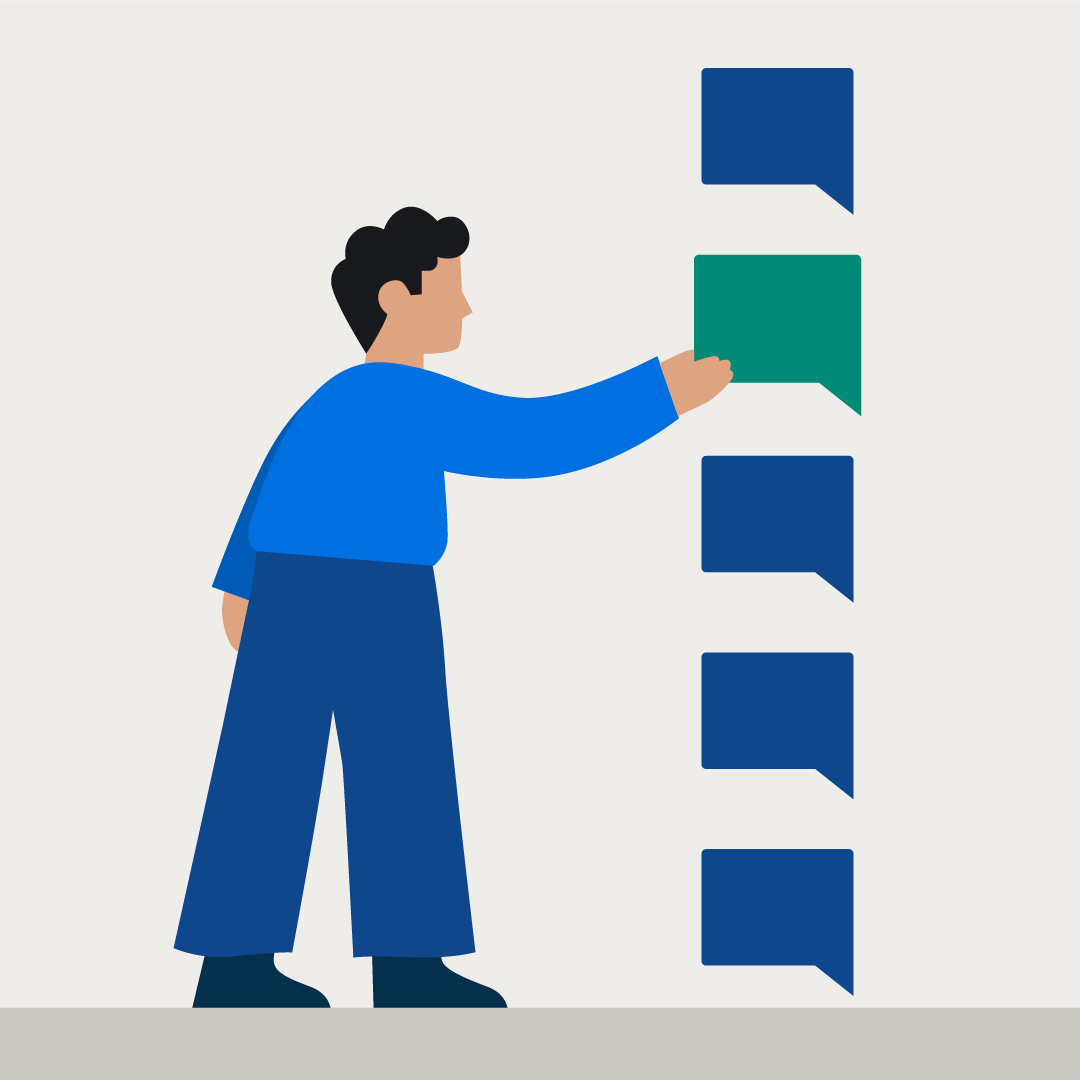By now, you’ve used ChatGPT in some form or another. Over the last year, according to our most recent Legal Trends Report, 79% of surveyed legal professionals are now using AI in some capacity in their practice, with 24% adopting AI widely or universally.
But with no formal training, you’re probably wondering if you’re harnessing its full potential.
In this comprehensive guide, we explain how legal professionals can maximize the benefits of ChatGPT through effective prompting. We’ve also compiled a wealth of practical examples and insightful strategies on how to write a prompt for good measure.
Learn how to enhance your legal practice with AI: Clio Duo is our secure, AI-powered solution that helps increase productivity and efficiency, transforming the way legal professionals work. Check out Clio Duo and book a demo.
What is a ChatGPT prompt?
A ChatGPT prompt is a message or question that’s typed into the ChatGPT textbox. The chatbot then processes the prompt by analyzing a vast amount of online text and generates a response. The quality of the response depends on the clarity and context initially provided.
How to create the most effective ChatGPT prompts
Using ChatGPT may sound straightforward enough—write a question, and the chatbot gives a response. But the information you receive hinges on what you input. In other words, without a solid understanding of how to write a prompt, you’re more likely to get answers that are generic, unhelpful, or worse, inaccurate. The repercussions of this are especially high in the legal industry.
That’s where prompt engineering comes in. Essentially, it’s about mastering the craft of writing prompts to enhance the chatbot’s output. It’s even spawned new jobs, with prompt engineers in high demand among companies.
Since we realize it’s challenging enough to find time to practice law—let alone learn a whole new skill—we’ve gone ahead and rounded up our five top strategies on how to write a prompt.
- Ask it to emulate a role. One proven strategy for optimizing prompts is to ask the chatbot to adopt the perspective of a particular legal profession. By doing so, you can tap into that expertise. Try using phrases like “Act as if you’re a legal assistant who is researching…” or “From the point of view of a tax attorney…” to elicit stronger responses.
- Eliminate ambiguity. Clarity is king when crafting ChatGPT prompts. To receive accurate and relevant responses, be sure to use specific action verbs, clearly define your objective and audience, and provide any other necessary details. For instance, you’ll get a much stronger answer to “Summarize recent case law on negligence in healthcare malpractice cases in Illinois” than you would with “Summarize the case law on negligence.”
- Embrace plain language. Jargon is prevalent in the legal field. When using ChatGPT, it’s important to avoid overly complex terminology or phrases as it can confuse the language model. Instead, opt for straightforward and concise words.
- Include the output. For all its intelligence, ChatGPT isn’t a mind reader. Meaning: if you’re not specific with what you’re looking for in your prompt, you’re less likely to get it. Do you need a few concise bullet points on corporate tax law or an in-depth explanation? Including details on the format and structure you’re seeking in your prompt will go a long way in saving time.
- Test and refine. If you don’t get the desired response right away, don’t be discouraged. Instead, experiment with slight variations of prompts to see what works and what doesn’t. Also, provide specific feedback to the chatbot if there’s something it can improve on in the next response.
Prompting tips for lawyers
When writing prompts in ChatGPT, there are a few additional considerations to keep in mind.
Always safeguard sensitive information. It’s essential to never input any private or confidential client information into ChatGPT. These programs use data to train their systems, which means the information may be visible to others.
Be aware of its pitfalls. It’s also important for anyone—and especially legal professionals—to verify the accuracy of information provided in ChatGPT. While the language model generally provides useful responses, the information isn’t always up to date—and in some cases, it’s proven to be fabricated (also known as hallucinations). It’s a good practice to request citations or references in your prompts and always take additional steps to confirm the accuracy of the information.
Yes, ChatGPT does record your prompts. As part of its data collection process, OpenAI saves conversations and prompts for future analysis and to improve the AI's performance. Users should be aware that any personal data shared in conversations could be used as training data.
Does ChatGPT record your prompts?
Specific prompt examples
Still a bit unclear on how exactly to write a prompt for your legal needs? We’ve crafted a range of specific prompt examples for various applications that show how to use the technology to its fullest potential.
Legal document creation
- Draft a non-disclosure agreement for a startup and investor. Ensure it contains clear confidentiality provisions, outlines the duration of obligations, and defines a dispute resolution mechanism for any conflicts.
- Generate a detailed commercial lease agreement for an office space in Miami. The lease should address key terms, including rental rate, duration, security deposit, provisions for common area maintenance, and tenant insurance requirements.
- Draft a last will and testament document for an individual, which covers the distribution of assets, appointments of guardians for dependents, and healthcare directives. Ensure the document complies with state laws in California.
Legal marketing
- Create 10 blog topic ideas tailored to the field of criminal law in Texas. These topics should cover a range of subjects related to criminal defense, laws, and legal procedures in the state.
- Write a two-minute YouTube video script that outlines the process of trademark registration and highlights its importance. The script should be engaging, informative, and intended for an audience with limited prior knowledge of the topic.
- Act as if you’re a family lawyer practicing in New York and need to create a comprehensive content marketing calendar for the next quarter. The focus should be on legal topics relevant to the area of practice, and include a detailed plan outlining blog posts, social media content, and any other marketing activities.
Legal research
- Playing the role of a paralegal, conduct comprehensive research and provide a detailed summary of the key elements of the Family and Medical Leave Act and its application to small business owners.
- Investigate and provide a detailed summary of the evolving legal framework and implications surrounding the use of artificial intelligence in autonomous vehicles, focusing on liability issues and regulatory challenges.
- Provide a succinct overview outlining the terms and obligations featured in the provided employment contract, offering clarity and brevity.
Client communication
- Prepare a comprehensive client memorandum explaining the legal risks and benefits of the client’s business expansion into a new market. The memorandum should offer a detailed examination of potential legal challenges, including financial regulatory compliance and contractual obligations.
- Create a comprehensive checklist for client onboarding for personal injury cases, outlining necessary documents, disclosures, and initial meetings.
- Provide a concise summary of the Occupational Safety and Health Act for a new law firm client in three paragraphs.
These examples are highly specific, provide context, clearly outline the intent, and specify what’s needed—which can maximize the responses and ultimately, help you work more effectively. Read our blog to learn more about how to write better prompts.
Final thoughts: Unlocking the full AI potential in your practice
As technological changes like artificial intelligence ripple through the legal industry, it’s essential for lawyers to maximize their potential. That starts with gaining an understanding of how to write a prompt that produces optimal results. By doing so, you’ll reap the many benefits it brings—from boosting productivity to delivering better client service.
To take your law firm’s efforts to the next level, explore the power of Clio Duo, our very own AI solution designed entirely for legal professionals. You can learn more about Clio Duo and book a free demo here.
Legal AI Virtual Summit 2025
Learn how law firms can unlock AI’s potential and work smarter in this free, CLE-Eligible event taking place on Monday, February 10 from 11:15 a.m. – 5:30 p.m. ET.
Register now

